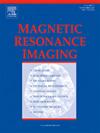Combination of clinicopathological and MRI based radiomics features in predicting homologous recombination repair genes mutations in prostate cancer
IF 2
4区 医学
Q2 RADIOLOGY, NUCLEAR MEDICINE & MEDICAL IMAGING
引用次数: 0
Abstract
Purpose
To develop Homologous Recombination Repair (HRR) Genes mutations prediction models for prostate cancer using MRI radiomics and clinicopathological features.
Methods
Totally 353 prostate cancer patients (102 with HRR genes mutations) from three centers (center 1: training and internal test cohorts, center 2 and 3: external test cohorts) underwent multiparametric MRI. Each patient's index tumor lesion was delineated on T2-weighted imaging (T2WI), dynamic contrast enhancement (DCE) MRI, diffusion-weighted imaging (DWI), and apparent diffusion coefficient (ADC) images to obtain 428 radiomics features. Features associated with mutations were selected from clinicopathological features using Mann-Whitney U and Logistic regression (LR) test, radiomics features using Least Absolute Shrinkage and Selection Operator. Clinicopathological model was constructed with selected clinicopathological features. Logistic regression (LR), support vector machine (SVM) and linear discriminant analysis (LDA) classifiers were used to construct Radiomics and combined clinicopathological-radiomics models. Predictive efficiencies of models were compared using areas under the receiver operating characteristic curve (AUC).
Results
One clinicopathological and six radiomics features were selected. Radiomics with SVM, LR, LDA and Clinicopathological models achieved AUCs of 0.76, 0.76, 0.76, 0.68 and 0.75, 0.76, 0.67, 0.73 in internal and external test cohort. AUCs of combined clinicopathological-radiomics models with LDA in internal and external test cohort (0.83 and 0.82) were slightly higher than combined models with LR (0.81 and 0.79) and SVM (both 0.80) (P > 0.05), but were significantly higher than radiomics and clinicopathological models in both cohorts (P < 0.05).
Conclusion
LDA classifier incorporating radiomics and clinicopathological features predicting could effectively predict HRR genes mutations in prostate cancer.
结合临床病理和基于MRI的放射组学特征预测前列腺癌同源重组修复基因突变。
目的:建立基于MRI放射组学和临床病理特征的前列腺癌同源重组修复(HRR)基因突变预测模型。方法:来自三个中心(中心1:训练和内部测试队列,中心2和3:外部测试队列)的353例前列腺癌患者(102例HRR基因突变)接受了多参数MRI检查。通过t2加权成像(T2WI)、动态对比增强(DCE) MRI、弥散加权成像(DWI)和表观弥散系数(ADC)图像描绘每位患者的指数肿瘤病变,获得428个放射组学特征。使用Mann-Whitney U和Logistic回归(LR)检验从临床病理特征中选择与突变相关的特征,使用最小绝对收缩和选择算子从放射组学特征中选择与突变相关的特征。选取临床病理特征建立临床病理模型。采用Logistic回归(LR)、支持向量机(SVM)和线性判别分析(LDA)分类器构建放射组学和临床病理-放射组学联合模型。使用受试者工作特征曲线下面积(AUC)比较模型的预测效率。结果:选取1例临床病理特征和6例放射组学特征。使用SVM、LR、LDA和临床病理模型的放射组学在内外测试队列中的auc分别为0.76、0.76、0.76、0.68和0.75、0.76、0.67、0.73。LDA联合临床病理-放射组学模型的auc在内外检测队列中分别为0.83和0.82,略高于LR联合模型(0.81和0.79)和SVM联合模型(均为0.80)(P > 0.05),但在两个队列中均显著高于放射组学和临床病理模型(P )。结论:结合放射组学和临床病理特征预测的LDA分类器可有效预测前列腺癌HRR基因突变。
本文章由计算机程序翻译,如有差异,请以英文原文为准。
求助全文
约1分钟内获得全文
求助全文
来源期刊

Magnetic resonance imaging
医学-核医学
CiteScore
4.70
自引率
4.00%
发文量
194
审稿时长
83 days
期刊介绍:
Magnetic Resonance Imaging (MRI) is the first international multidisciplinary journal encompassing physical, life, and clinical science investigations as they relate to the development and use of magnetic resonance imaging. MRI is dedicated to both basic research, technological innovation and applications, providing a single forum for communication among radiologists, physicists, chemists, biochemists, biologists, engineers, internists, pathologists, physiologists, computer scientists, and mathematicians.
 求助内容:
求助内容: 应助结果提醒方式:
应助结果提醒方式:


